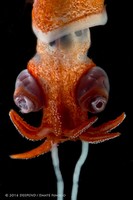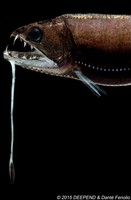Scientists have identified more than 180 species of fish new to the Gulf of Mexico and another 20 – 30 that are new to human eyes.
Unfortunately, it took the loss of thousands of animals to …
This item is available in full to subscribers.
Please log in to continue |


Scientists have identified more than 180 species of fish new to the Gulf of Mexico and another 20 – 30 that are new to human eyes.
Unfortunately, it took the loss of thousands of animals to lead to the discovery.
After the explosion of the Deepwater Horizon oil rig in 2010 scientists were tasked with determining how much environmental damage was caused. The spill dumped roughly 3.19 million barrels of oil a mile below the ocean surface over 87 days. Officials knew the damage was extensive. On the surface the spill killed an estimated 80,000 birds, 35,000 hatchling sea turtles and over 500 million pounds of oysters.
Deep in the waters of the Gulf, however, no one was completely sure what creatures lived there, or how the spill impacted them.
“The big problem was the oil spill was a mile deep and we had no data for what lived down there before the spill. It’s very difficult to assess damage when you have no pre-data,” said Tracey Sutton, an oceanographer at Nova Southeastern University and a Mobile native.
Sutton said the region was never explored because there was no immediate need to know.
“People don’t fish it and it requires specialized gear. Research vessel time is fairly expensive,” he said. For all of those reasons most oceans around the world are not well explored.
“We really don’t know the water column that well anywhere in the world,” Sutton said. “You think we’d know everything but, not at all.”
A water column is the ocean environment between the surface and the sea floor.
After the spill, in addition to the $18.7 billion in damages BP agreed to pay, and criminal charge penalties, the oil company also gave $500 million to 20 independent researchers to explore the Gulf’s deep waters. These companies formed the Gulf of Mexico Research Initiative.
Part of that group, called the DEEPEND Consortium, was tasked to explore the Gulf’s depths and see just what types of creatures linger there.
Sutton said his team’s year-long survey grew and before long the team had several vessels dive the depths and returning with lots of net samples, cast 1 mile down. After four years of analyzing samples Sutton’s team found animals that had not previously been known to live in the Gulf. Previously, scientists believed about 1,600 species of fish called the Gulf home. The sampling increased the waters’ total species count by at least 10 percent.
There were also creatures they had never seen before in the whole world, including several called dragon fishes.
“They’re quite horrible looking,” Sutton said. “They are fish with big teeth and a lure hanging off their chin that off has light organ hanging on the end to lure prey.
“I really enjoy working at sea. The best part is when you bring in samples, unload the net, pour it out and look and see what’s in there and say, ‘oh I haven’t seen that before’.
“The Gulf of Mexico is amazingly diverse, even in the deep waters, that’s our biggest take home point,” Sutton said. “People think once you get far enough off shore it’s like a desert but it actually is one of most diverse deep sea ecosystems in the world.”
The Gulf’s location helps it become a perfect home for many species. Warm water comes from the Caribbean but the northern Gulf is cooled in the winter.
“It’s kind of a melting pot of tropical and cool water species. It’s incredibly diverse,” Sutton said.
When the fish are hauled onto the boat decks, none of them are still alive. Most live in waters so deep and cold that as they are brought to the surface, the warmer waters kill them. Sutton’s team formally describes the animals and then the rarer specimens will be sent to a museum for safe keeping.
The scientists at the DEEPEND Consortium continue their work today and have created a baseline of data so that in case of future spills, scientists will know just how much damage was caused. Sutton said, unfortunately, that is not the case for much of the world’s oceans.
“We’re kind of extending our reach into regions we haven’t even censored yet. We’re moving more and more into deep water for resources like oil and minerals. It’s really quite important that we study these things before we damage them. That’s the critical point,” Sutton said.
Want to learn more about the DEEPEND Consortium? Visit the website at www.deependconsortium.org